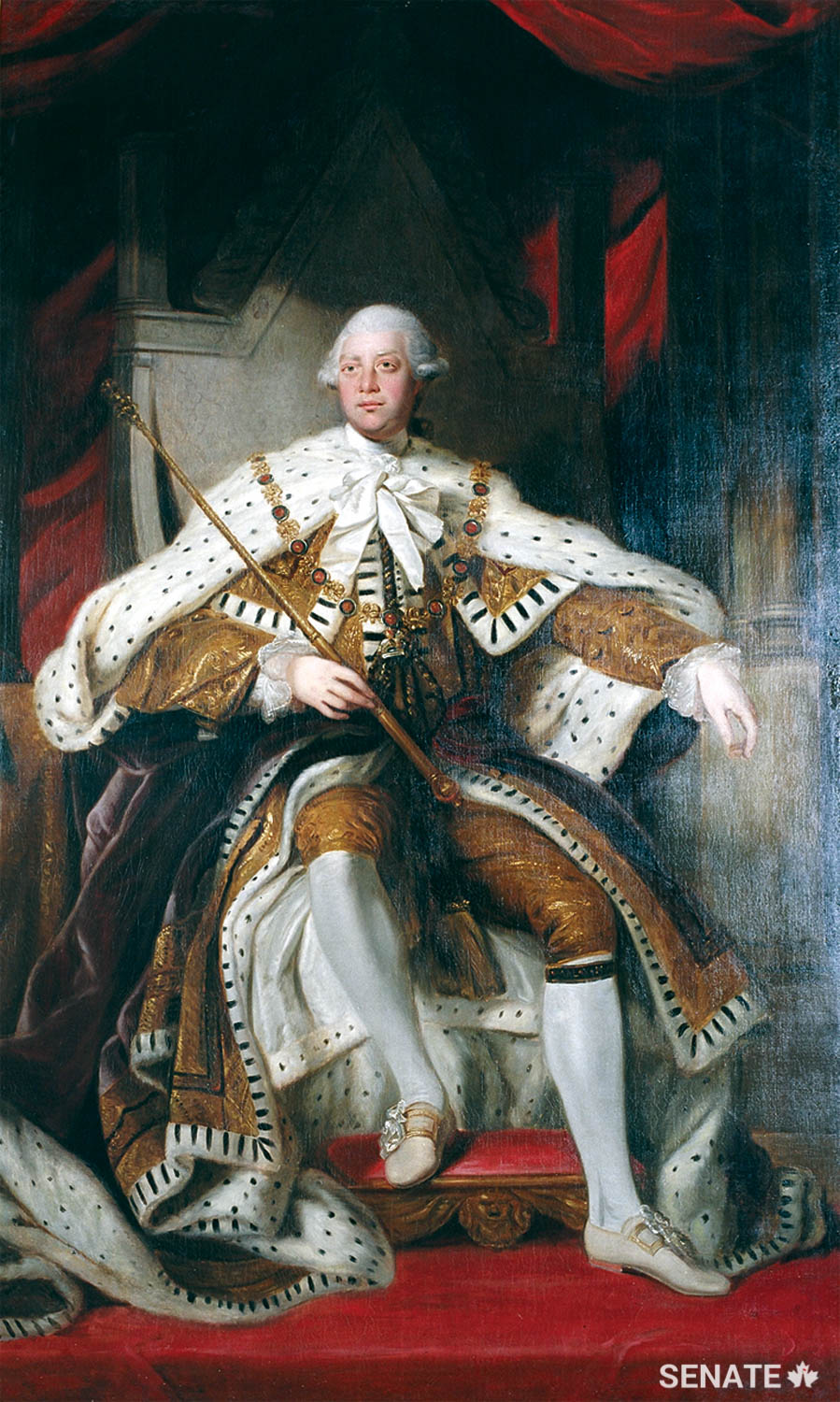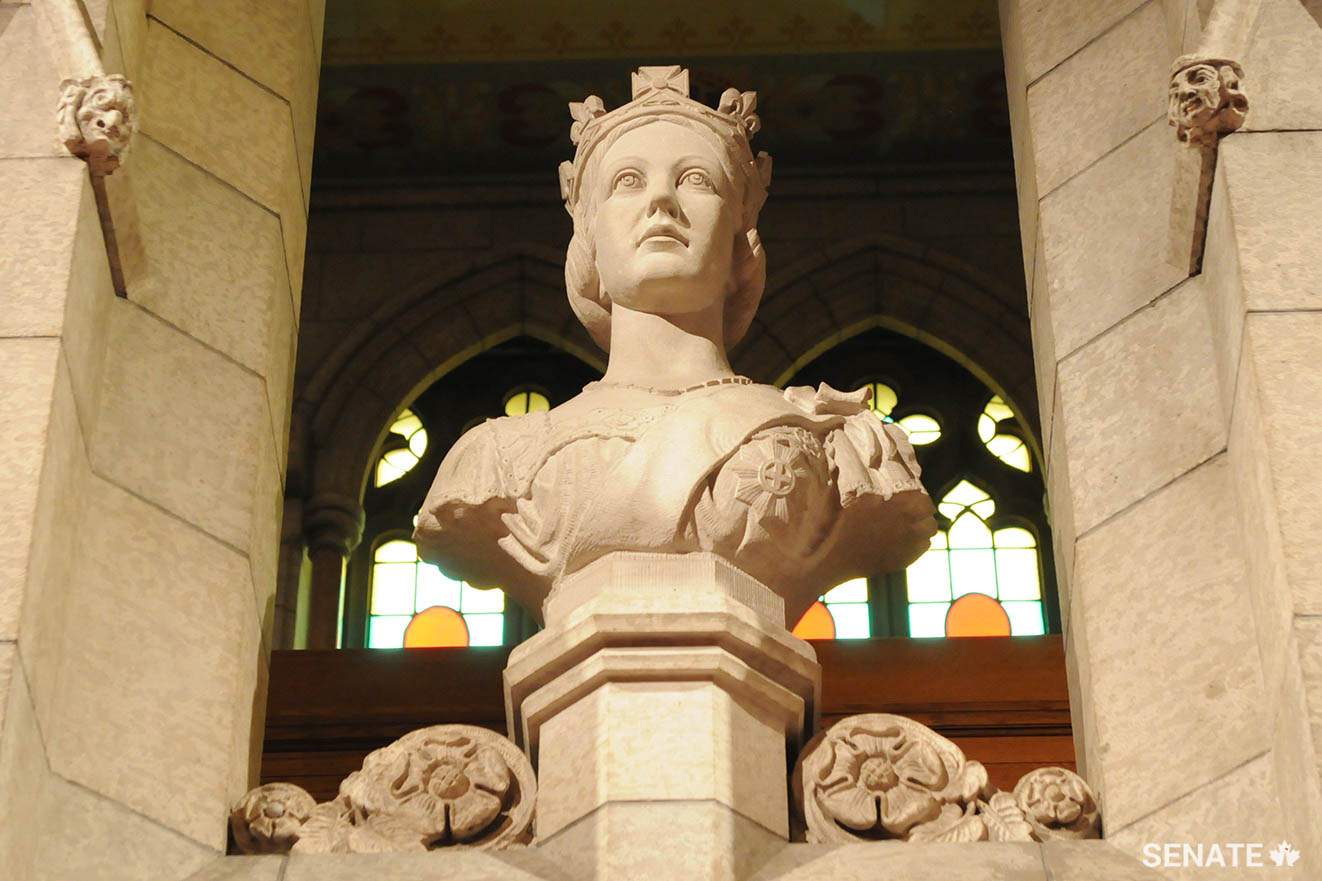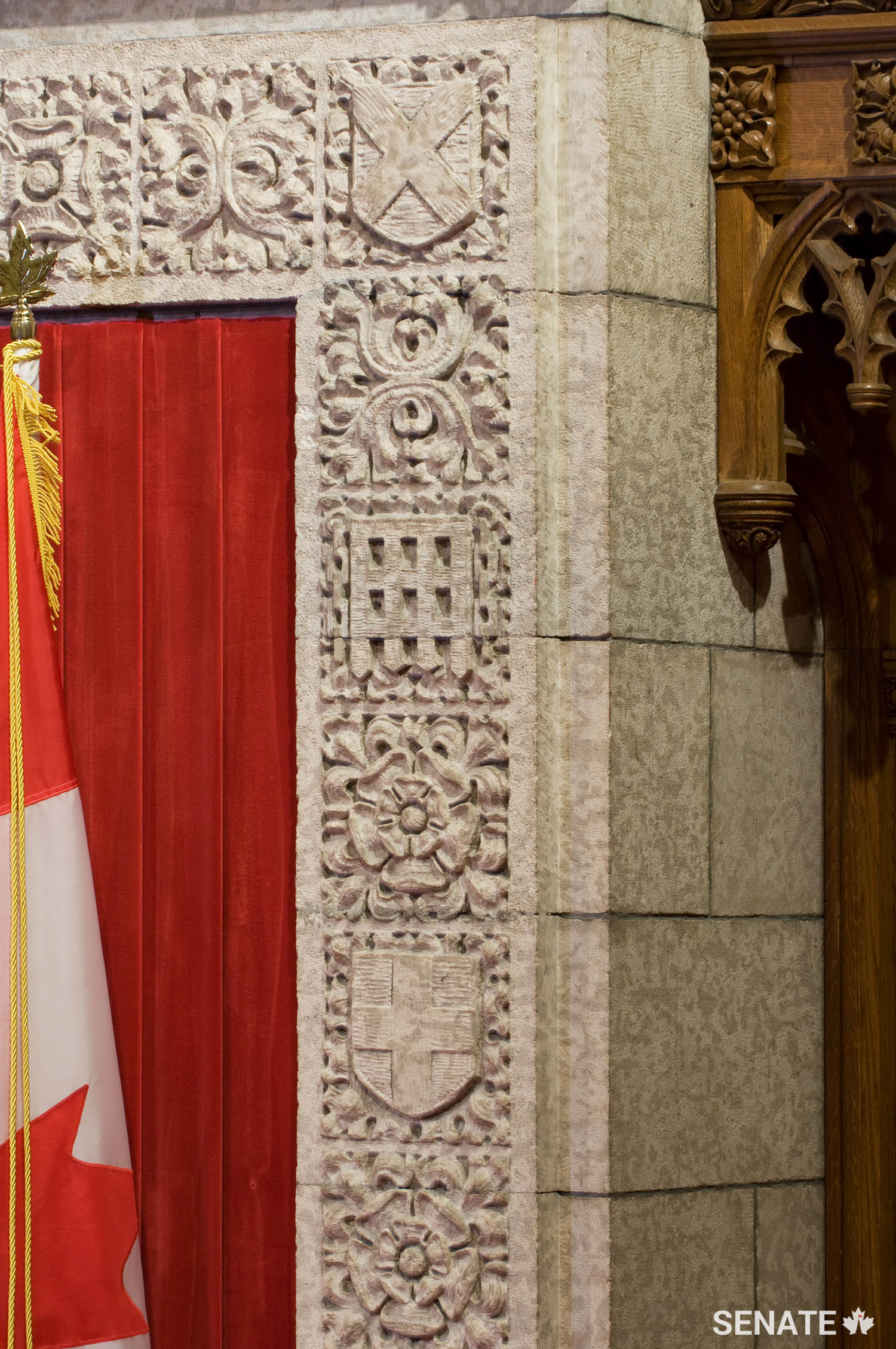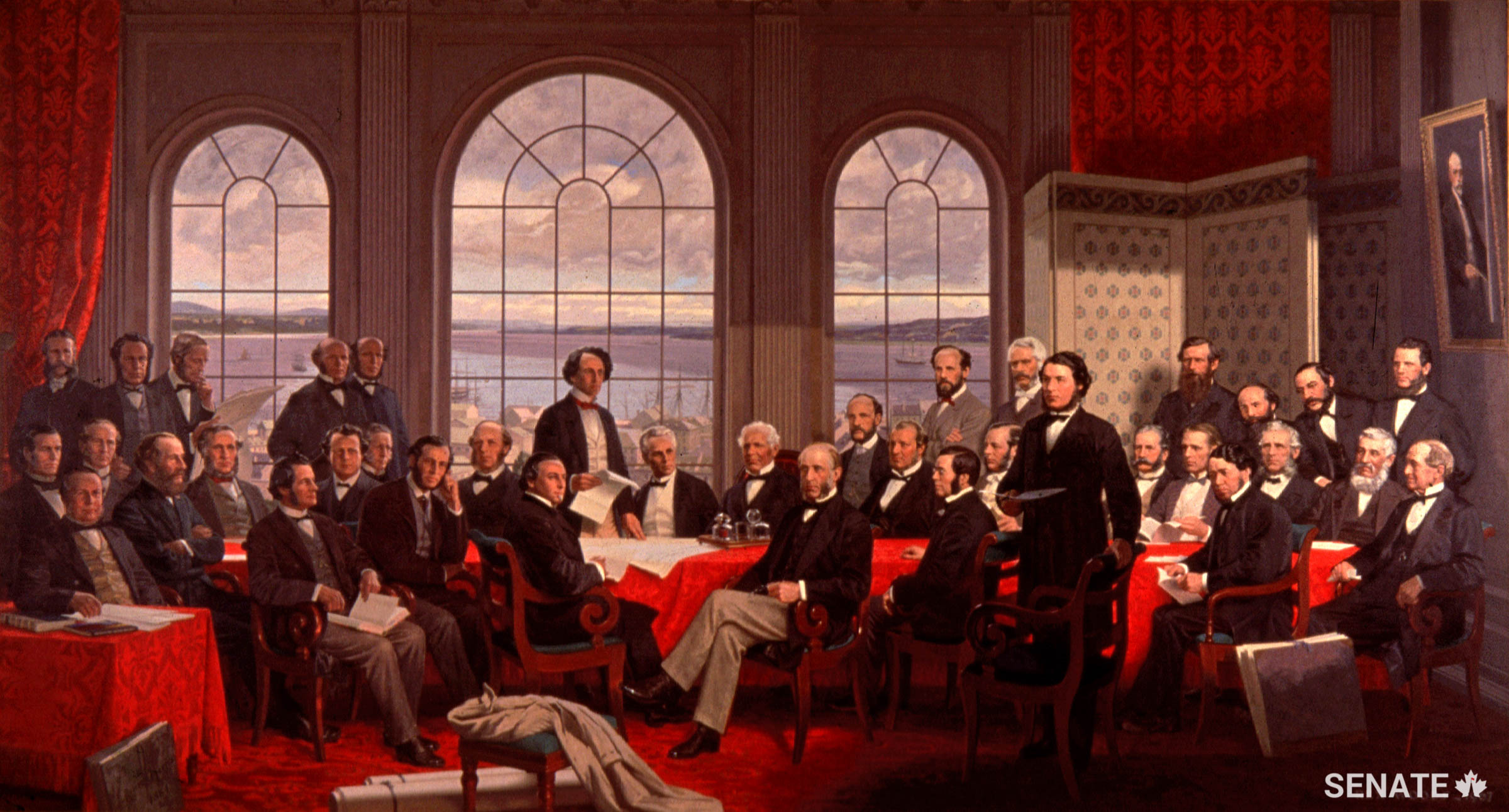How the French and English shaped Canada: Competition, conquest and Confederation

Paintings and carvings in Parliament Hill’s Centre Block chronicle the history of Canada. One story they tell is of French and English coexistence — the centuries Europe’s dominant powers vied for military and economic supremacy in the New World and the period in which the two cultures co-operated to build the modern nation of Canada.
Two centuries of French rule began to unravel in the 1750s. King Louis XV is the last of nine Ancien Régime kings whose portraits hang in the Salon de la Francophonie. These French monarchs governed New France from the 1500s to the 1700s.
King George III, whose portrait hangs around the corner in the Senate foyer, is the first of nine British monarchs who succeeded them.
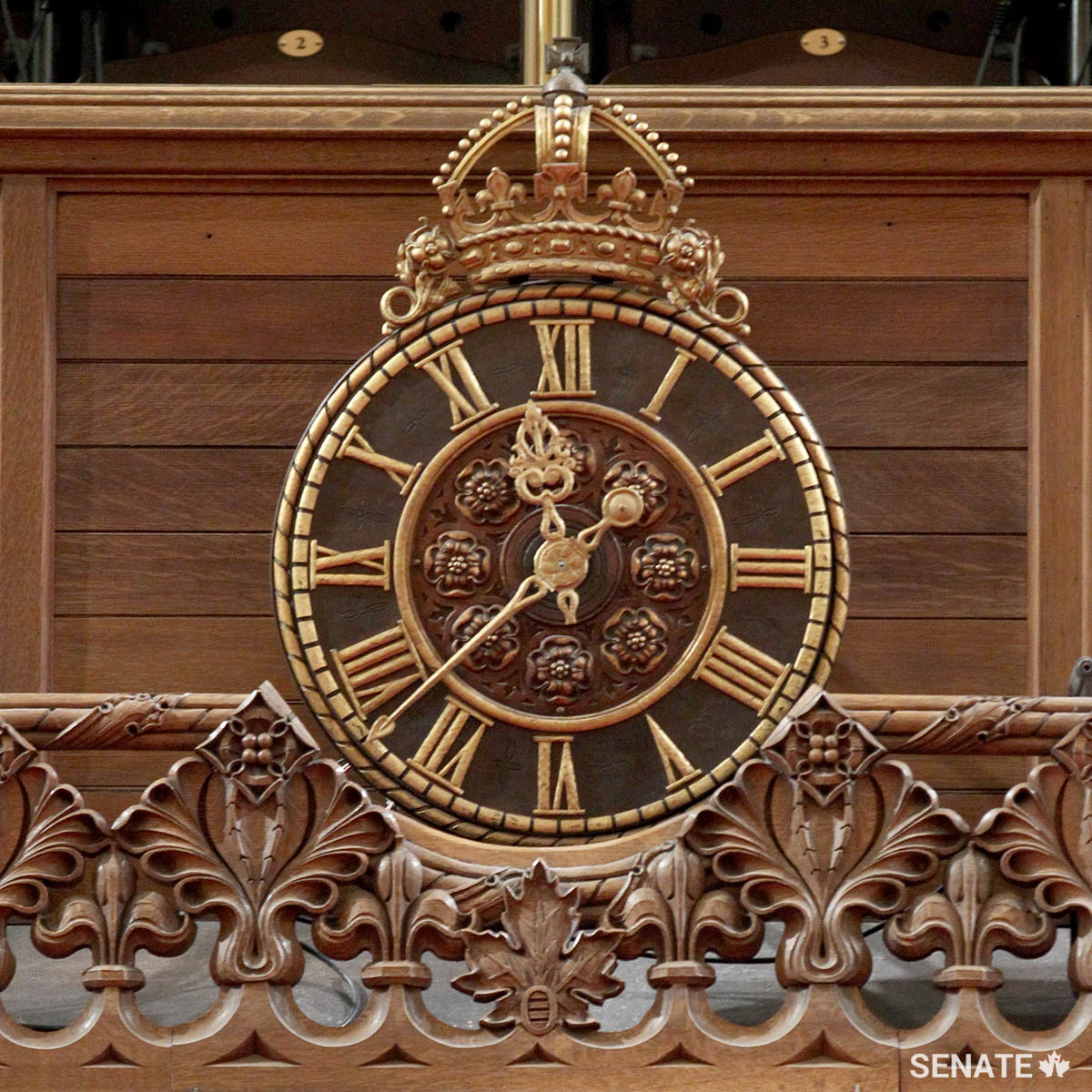
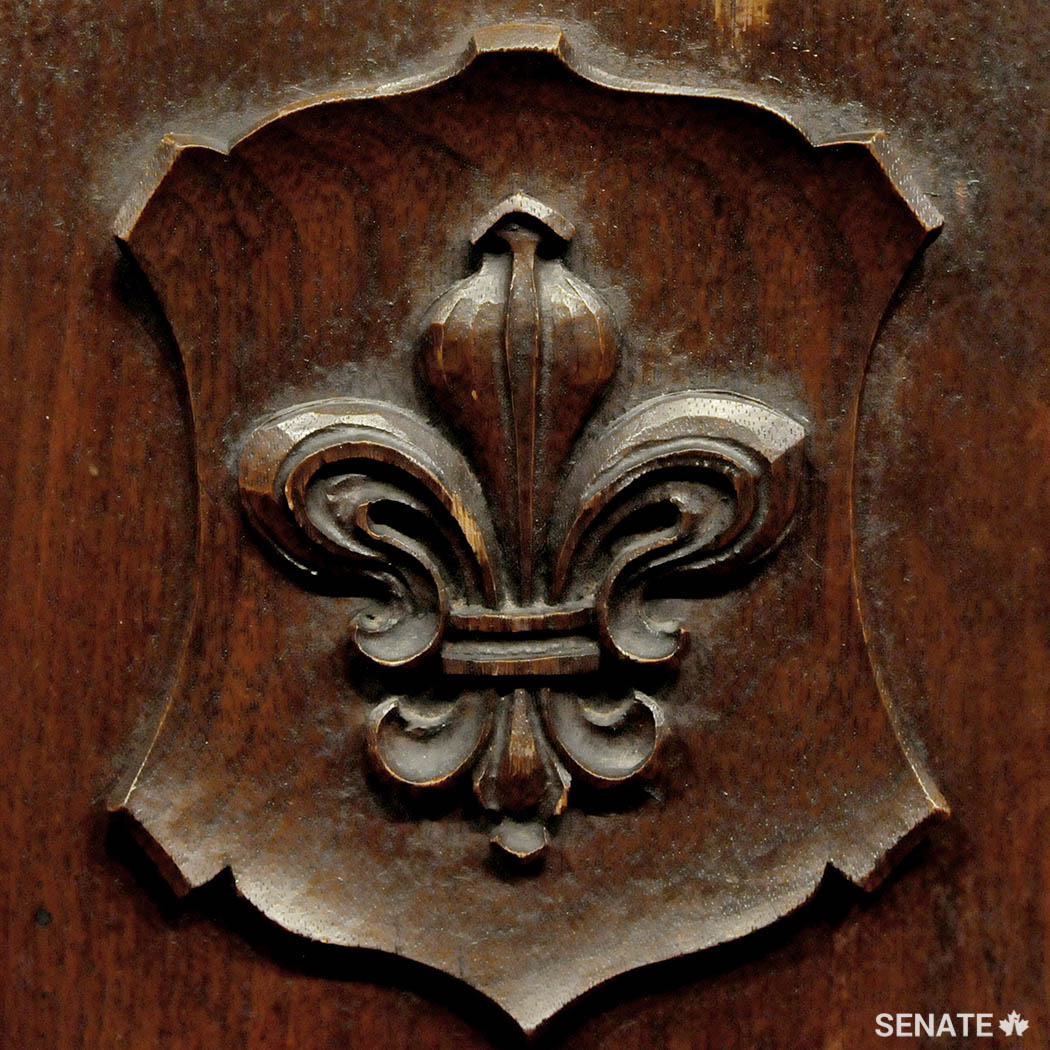
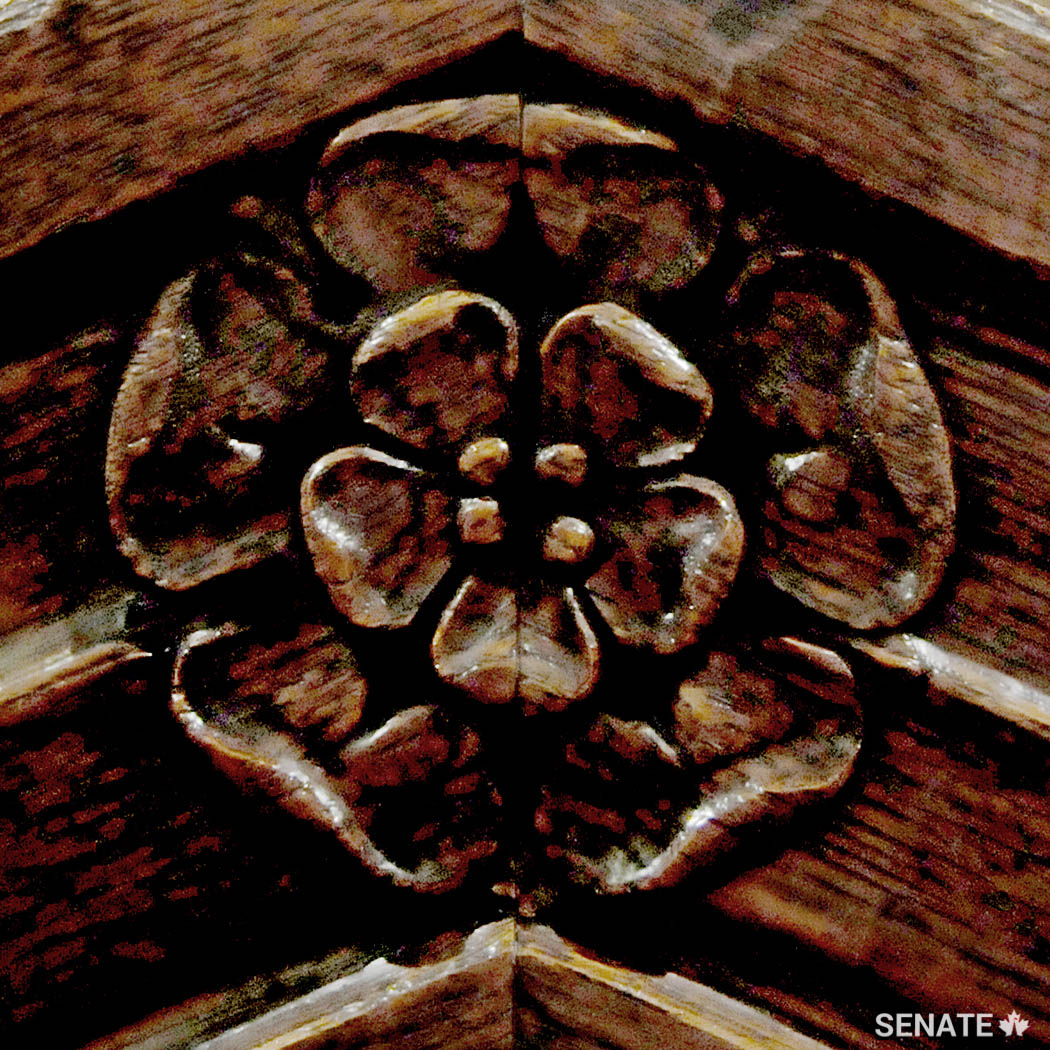
After New France’s last remaining stronghold, Montreal, surrendered to the British in 1759, the future looked uncertain for the St. Lawrence Valley’s 80,000 francophone inhabitants as they waited to see what terms the peace settlement would force on them.
These francophone farmers, fur traders, merchants and craftsmen formed the economic lifeblood of the colony.
With revolution brewing to the south, the British were careful not to provoke the Canadiens lest they throw their support behind the American rebels. The British guaranteed Catholic francophones property rights as well as religious and economic freedoms.
In 1791, the single colony was split in two — English Upper Canada and French Lower Canada. They were culturally distinct but the day-to-day concerns of their inhabitants were identical.
French and English were united in their demand for an end to authoritarian governments that were accountable only to themselves, the governor and the Crown rather than to the people they governed. Rebellions in both colonies in 1837 were quickly and firmly supressed.
A report penned by John Lambton, Lord Durham, in 1839 acknowledged the colonists’ frustration and called for the reunification of Upper and Lower Canada into a single Province of Canada with an elected government responsible to the entire electorate. It was slow in coming but continued public pressure paved the way for the establishment of responsible government in 1848.
In 1857, George-Étienne Cartier and John A. Macdonald formed an alliance to press even further for a made-in-Canada solution. Cartier spoke for a large block of French supporters concerned their influence would be swamped by the rising tide of British immigration. Macdonald represented English Conservatives who wanted a strong, decisive central government grounded on firm principles of representation by population.
The compromise they hammered out with other regional delegates at the Charlottetown and Quebec conferences of 1864 was a federation of provinces rather than a single legislative union like Britain’s.
There would be two houses of Parliament, as in Britain. Unlike Britain’s House of Lords, however, Canada’s appointed upper house would be the voice of regions and minorities rather than of traditional aristocratic privilege.
In this way, Canada’s Senate was designed as a counterbalance to the elected House of Commons — a safeguard that would prevent heavily populated central Canada from marginalizing less populous regions and that would block ethnic and cultural majorities from dominating the national agenda.
The result was the modern Canadian parliamentary system, a unique system of checks and balances that has proven remarkably effective at reconciling the interests of French and English, town and country, East and West, and North and South.
A final conference in London to prepare the proposal for Queen Victoria’s formal approval led to Britain’s recognizing the new “Dominion of Canada” in 1867. More than 400 years of sometimes fractious but mostly friendly relations had culminated in Confederation — the signal achievement of French-English co-operation.
This is the second of a two-part series about the French and English in Canada. Explore the art and architecture of the Senate, and follow the story of French and English rule told by its paintings and sculptures, by taking the Senate Virtual Tour.
